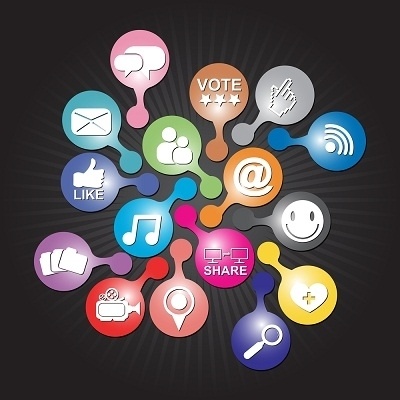Motivate Employees To Unlearn And Inspire Them To Relearn
When I moved to the USA from the southern hemisphere 20 years ago, I had to learn to drive on the other side of the street. This required me to “unlearn” what I knew and “relearn” how to drive. There was no choice or reason to delay. If I did not adapt, my safety and the safety of those around me would be at risk! Similarly, workplace employees do not have the luxury of slowly adapting to change. The pace is fast, constant and often overwhelming.
We know that an organization’s ability to adapt to change is critical to business success. Do we also appreciate the impact of individual behavior on successful transformations? For this to happen, individuals need to unlearn what they have previously learned and then relearn new and relevant information. This “learn-unlearn-relearn” cycle may repeat many times over.
Learning professionals can facilitate successful change by motivating employees to unlearn and then inspiring them to relearn.
How To Motivate Learners To Unlearn
Some writers define the goal of unlearning as “deliberately discarding” or eliminating information. I prefer the idea of moving on from a tool, product, or information that will no longer be useful in the future. It’s like the mice moving on in the book Who Moved My Cheese so they don’t become extinct.
Typically, people like to stay where they are and question why they have to make a change. They may be overwhelmed by the number of changes in the organization and question, “Why is the change really necessary?” and “Why can’t I keep doing things as they are?”
Employees need to care about the change to unlearn. To facilitate this feeling, it worthwhile studying two important frameworks for addressing change: The ADKAR Model and Kotter’s 8-Step Process. The ADKAR Model builds awareness of the need to change and creates the desire to support the change for the change. The Kotter process starts with creating a sense of urgency for the change.
Together with Organizational Change Management (OCM), they provide the incentive for unlearning:
- Communicate “why” the change is necessary using measurable, objective data. The change sponsor should always deliver the message. According to an IBM study, an overwhelming 83% named top management sponsorship as the most important factor for successful change.
- Stress the urgency of making the change. Reasons may include improving sales, increasing customer satisfaction, ensuring legal compliance, cutting-edge innovation, growth, or the upcoming elimination of a system or process.
- Promote the What’s In It For Me (WIIFM), for all roles impacted by the change. Summarize the key benefits for critical roles so they are relevant, informative, and engaging.
How To Inspire Learners To Relearn?
At this point, we hope that learners have been given a good reason to unlearn so the stage is set for relearning. What makes relearning unique, and what needs to be emphasized so that people do not revert back to their old ways?
1. Leverage Existing Knowledge
In any transition, one of the first questions people ask is “What is different from what I am doing now?” This is an opportunity to build on the foundation of “old” knowledge. Relearning should leverage the power of existing knowledge since, according to Patti Shank, “Prior knowledge helps us understand what we are learning.”
An effective method to connect existing knowledge to new information is a simple table that compares critical differences side by side. This table helps provide a starting point for relearning. To identify the top changes, brainstorm a list and then rank the top five or ten with a group of core SMEs.
2. Engage The Head, Heart, And Body
In any learning experience, it is critical to engage the head, heart, and body. It is even more important to engage learners at all levels when relearning is required.
Your learning deliverables should be targeted at the following:
- Head
Reinforce the “why” and WIIFM in all learning materials so that the content has urgency and relevance. - Heart
Learners engage with content if their emotions are evoked with humor, characters, high-quality graphics, real-life scenarios, challenges, and stories. Keep the WIIFM close to the learner's heart at all times. - Body
Provide opportunities for application of knowledge with hands-on practice, simulations, and role playing. To account for multiple sites and global users, provide advanced skills to super-users, who can then train across sites and reinforce the learning.
3. Provide Hi-Tech And Hi-Touch Performance Support
Change initiatives often impact those spread out across multiple locations, often globally. Relearning initiatives should include hi-tech and hi-touch methods.
Hi-tech support methods include self-paced learning (eLearning, microlearning, searchable FAQs, knowledge bases), social learning (blogs, wikis, microblogging), and workflow support tools. System overlays with instructions (for example, WalkMe) can provide on-demand support without having to review instructions outside a system.
The goal of hi-touch support is to give change participants a feeling that someone is out there to “hold their hand” when they need on-demand help. Some methods include a go-live support line, telephone hours for SMEs, and in-house chat tools, for example, Skype and Yammer.
Some companies consider hand-holding so important that they precede or follow-up a go-live with face-to-face interactions to answer questions and demonstrate critical system changes.
Another effective method is identifying change champions, who drive the change and, upon implementation, reinforce the new state with help, support, and a positive attitude.
Move It Forward
Individual behavior change is driven by unlearning and relearning. By effectively communicating the why, urgency, and WIIFM, you can help spur unlearning. By encouraging employees to leverage existing knowledge, engaging their heads, hearts, and bodies, and providing hi-tech and hi-touch performance support, you can inspire relearning and facilitate successful changes in the workplace.
References:
[1] Three ways to unlearn old habits Faster
[2] You Must Learn How To Unlearn
[3] No We cannot Look Everything Up








